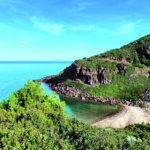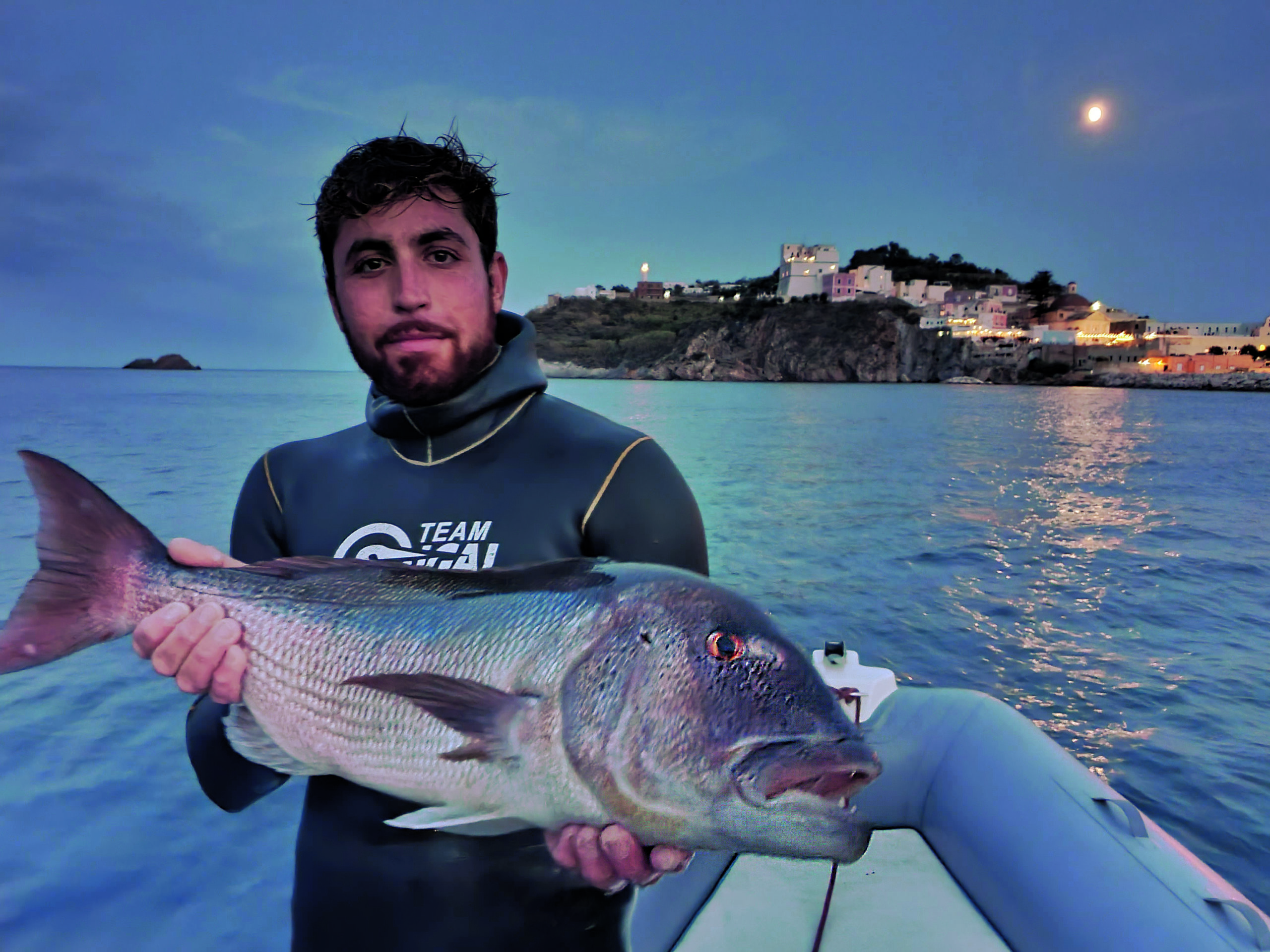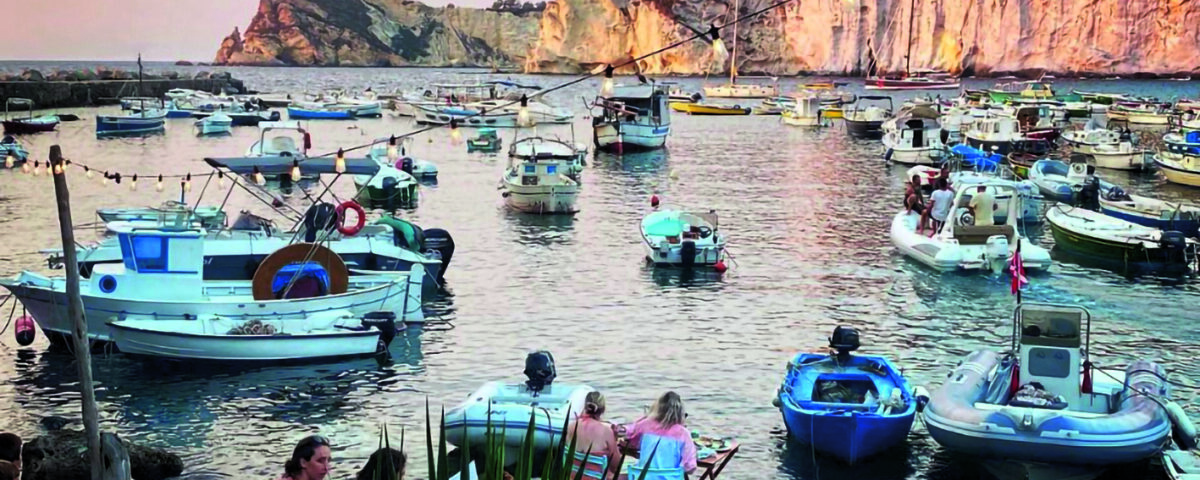Ponza, the Crystal Island

Escaping from the city!
11 September 2023
Stintino in Winter
11 September 2023The seabeds, the catches, the techniques, and even where to sleep and eat. Easily accessible from Rome, it is characterized by always clear waters, where you can catch large fish like dentex and groupers in the deep. Beware of the chaotic boat traffic during the summer.
by Emiliano Brasini
And here we are again, leaving early and heading to Terracina: from Rome, you can comfortably reach it in about an hour and a half via the Pontine consular road. I arrive at the port just in time for a coffee with Ermanno Mori, from the Mori Mare store. Tickets in hand, we set off for the Pontine Islands, where we will meet the skilled athlete Sigal, Salvatore Sandolo, also known as "Panzatuosta," a nickname inherited from his grandfather, who was also an excellent local fisherman.
An hour on the fast ferry, and I am in Ponza, the largest of the Pontine Islands, which also include Gavi, Zannone, Ventotene, Palmarola, and Santo Stefano. Famous for its coasts and wild nature, but also for being a place of political exile for opponents of the fascist regime, and later the place of Mussolini's own exile.
The port is the perfect introduction to the island, immediately expressing its colors and, above all, the spirit of the Ponza people. It's a place where everything seems chaotic and confusing, where the commercial port blends with the tourist one, where scooters brush against you on the narrow waterfront while dozens of shipowners prepare to buy ice for the hot summer days, and wives buy fresh bread from the many grocery stores along the quay... all of this happens in a unique harmony!
As soon as I set foot on land, my first stop is at the shop of my good friend Marcello Mazzella, where having a beer is an essential ritual, and it doesn't matter if it's late morning; after all, I don't have to fish today! Salvatore picks me up, super tanned and with the smile of someone who knows a lot; the adventure begins. We load up the green Ape, a legacy from his grandfather, and head towards home, in the direction of "Le Forna." The journey is breathtaking, an unspoiled paradise; we drive up a narrow road surrounded by myrtle and licorice bushes, and when we arrive at Cala Feola, the view is breathtaking: Palmarola in all its beauty, wild and uninhabited.
Once at home, we settle in, and Salvatore, being a skilled cook, prepares the house's specialty: lobster spaghetti. Ponza is famous for its professionals who catch this delicious crustacean, which they still hunt using handmade traps.
After lunch, we have a chat over a good coffee about what to expect tomorrow. "In Ponza, you can do all kinds of fishing," Salvatore explains to me. "Of course, you have to consider the timing and, above all, the presence of boats, which are certainly not scarce in the height of summer! In winter, you can go after large dentex in very shallow water, especially near the most important landslides that characterize the northern part of the island, near the lighthouse at Punta del Fieno or in the vicinity of Punta Capo Bianco. All these spots are accessible only by boat, unless you want to climb the mountain goat trails! Another interesting spot is in Palmarola, on the side facing Ponza, especially between the Scoglio della Forcina and Cala Brigantina, where it's not rare to encounter specimens over a kilo hiding under the very difficult sandstone slabs scattered among the Posidonia seagrass.
"In spring and autumn, I usually fish for dentex and barracuda by trolling," Salvatore continues, "I mainly go to the ridge between Ponza and Zannone, near the Secca del Varo, where there are rapid ascents with depths between 15 and 20 meters. On days with optimal current and visibility conditions, it's possible to come across schools of hundreds of specimens weighing between 3 and 5 kilos. Here, it's also possible to catch large corvina in the first 25 meters of depth. This happens at Scoglio di Gavi, a place characterized by grove stripes wrapped in Posidonia meadows."
Despite the large influx of tourists, summer is undoubtedly the best season. "Unfortunately, the depths increase considerably, and I'm forced to fish at significant depths to catch the large dentex. I use a sliding sinker, and despite my young age, I boast dream catches, with several specimens weighing over 8 kilos.
"When there's no sign of these predators, I dedicate myself to fishing for large serranids in their dens, which are still well-present, but every year they move deeper into their homes. Unlike the rest of Lazio, where people tend to make the grouper hide in their dens, here, the action is successful only by practicing long ambushes close to the seabed; you need to be almost invisible until you get close to the den: if you manage to shoot the fish near the entrance, there's a chance to overcome the serranid, otherwise, it becomes practically impossible, as these dens are always inaccessible."

A secret place?
"Now you're asking too much! Let's say that near the Scoglio della Botte, there are some unmarked ascents not shown on commercial nautical charts. There are five of them, to be precise, and I've called them the 'crown' because they are positioned in a way that forms a royal hat. They rise gently from over 100 meters deep to about 60 meters, creating these peaks at around 50 meters! A true paradise, where prey is rarely scarce, an oasis where from September to November, the presence of pelagic fish is constant, especially at sunset. Of course, due to the depth, it's a place reserved for a few, but with dedication and sacrifices, meter by meter, and with specific training, those depths have become familiar to me. Here, in late autumn, I was fortunate enough to encounter several large amberjacks and spotted a huge tuna, fortunately out of range!"
Where would you recommend staying in Ponza?
"I would definitely rely on the Azzurra Residence, which caters to all the needs of fishermen, or the B/B Casa Giulia; it's located in San Antonio and is easily accessible from the sea or the tourist port."
And for eating?
"You can eat well anywhere on the island. Certainly, a place to visit for those who are fit or have a boat is La Marina, in Cala Feola, right below my house. You access it via 300 steps downhill and burn off the meal with 300 steps back up. Alternatively, you can go by boat to the natural harbor of Cala Feola, right in front of the restaurant. I recommend trying the 'parmigiana di pale di fico,' a local specialty made with young prickly pear pads, it's delicious. Another restaurant where you'll have a great dining experience is AcquaPazza, famous for its seafood specialties. Another noteworthy place, offering local cuisine with a gourmet touch, is Gamberi e capperi, located near San Antonio. I recommend trying their main dish, shrimp and capers flambéed with brandy; besides being visually stunning, they are truly delicious! For a typical Ponza-style breakfast, where everything is homemade, from pastries to cakes, go to Pasticceria Gildo, in Piazza Vitiello, on the main street of the island."
If I needed to rent a boat?
"On the island, there are many people who organize tours for tourists, but in our case, I recommend Da Luisa boat rental, where you can rent boats equipped with the latest-generation GPS and echo sounder. And, of course, in Marcello Mazzella's store, you can find all the equipment needed for spearfishing. It's located on the Fazio quay, right next to the ferry."
Thank you for the tips! It's time to sharpen the spears and prepare the equipment for tomorrow. After all these stories, I can't wait to dive into these crystal-clear waters, where we will test the brand-new spearguns from the Sigal brand. But that's another story...


